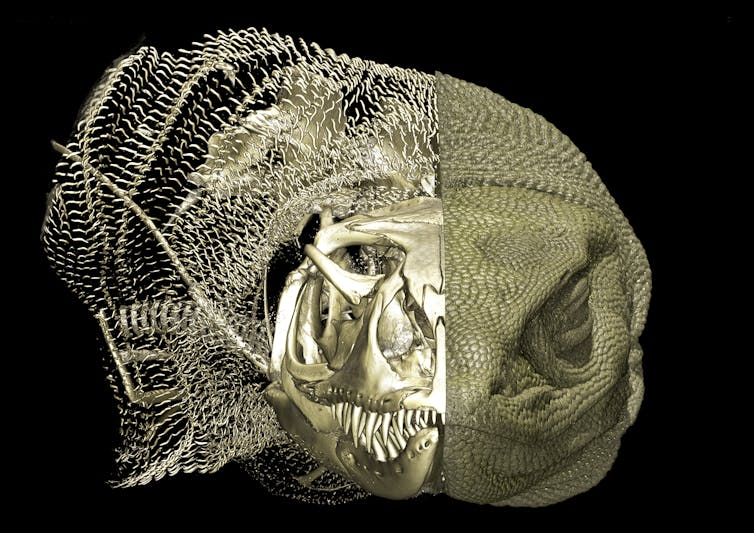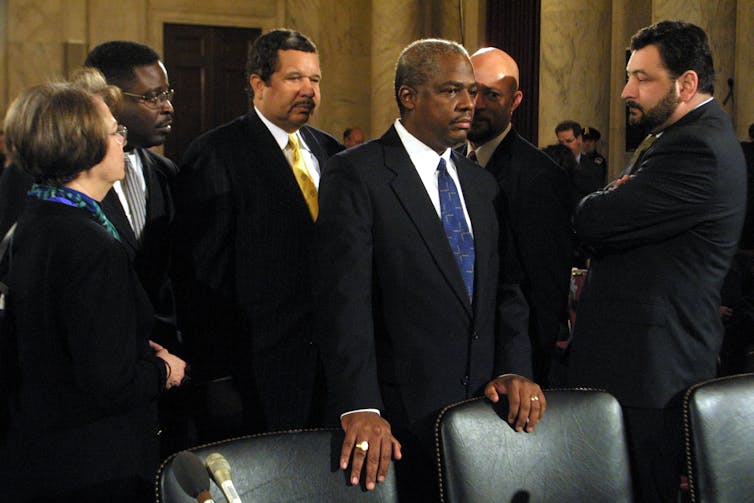Source: The Conversation – France in French (2) – By Jeffrey S. Rosenthal, Professor of Statistics, University of Toronto
Lorsque l’ancien champion du monde d’échecs Vladimir Kramnik a laissé entendre qu’Hikaru Nakamura, l’un des meilleurs joueurs du monde actuellement, trichait sur la plateforme en ligne Chess.com, un statisticien a été appelé pour enquêter.
En tant que professeur de statistiques, il n’est pas fréquent que je sois contacté directement par le PDG d’une entreprise valant plusieurs millions de dollars, et encore moins au sujet d’une histoire d’allégations de tricherie et de malversations impliquant des champions du monde d’échecs.
C’est pourtant ce qui s’est passé l’été dernier. Erik Allebest, PDG du plus grand site d’échecs en ligne au monde, Chess.com, m’a demandé d’enquêter sur les allégations de l’ancien champion du monde d’échecs Vladimir Kramnik concernant les longues séries de victoires d’un des meilleurs joueurs du monde, l’Américain Hikaru Nakura.
Kramnik a déclaré que ces séries avaient une très faible probabilité de se produire et qu’elles étaient donc très suspectes. Il n’a pas formellement accusé Hikaru de tricherie, mais le sous-entendu était clair. Sur Internet, les esprits se sont vite échauffés : les partisans de Kramnik postant des commentaires virulents (souvent en russe) sur cette présumée tricherie, tandis que de nombreux joueurs de Chess.com et partisans d’Hikaru rejetaient les accusations.
Qui a raison ? Qui a tort ? Est-il possible de trancher ?
Erik Allebest m’a demandé de réaliser une analyse statistique indépendante et impartiale pour déterminer le degré d’improbabilité de ces séries de victoires.
Le calcul de probabilités
Pour résoudre ce problème, j’ai d’abord dû calculer la probabilité que chaque joueur gagne ou fasse match nul dans chaque partie. Les joueurs peuvent avoir des niveaux de jeu très différents. Les meilleurs ont évidemment plus de chances de vaincre des adversaires moins expérimentés. Mais à quel point ?
Chess.com attribue un classement à chaque joueur qui varie après chaque partie, et ces notes m’ont été communiquées. Mon analyse a suggéré qu’un modèle mathématique pouvait fournir une estimation précise des probabilités de victoire, de défaite ou de nulle pour chaque partie.
En outre, les écarts par rapport à cette probabilité dans les résultats de parties successives étaient approximativement indépendants, de sorte que l’influence d’une partie sur la suivante pouvait être ignorée en toute sécurité. J’ai ainsi obtenu une probabilité claire que chaque joueur gagne (ou perde) chaque partie.
Je pouvais alors analyser ces séries de victoires qui avaient provoqué tant de débats enflammés. Il s’est avéré qu’Hikaru Nakamura, contrairement à la plupart des autres joueurs de haut niveau, avait joué de nombreuses parties contre des joueurs beaucoup plus faibles. Cela lui donnait donc une très grande probabilité de gagner chaque partie. Mais malgré cela, est-il normal d’observer de si longues séries de victoires, parfois plus de 100 parties d’affilée ?
Tester le caractère aléatoire
Pour le vérifier, j’ai effectué ce que l’on appelle des simulations de Monte Carlo, qui répètent une expérience en intégrant des variations aléatoires.
J’ai codé des programmes informatiques pour attribuer au hasard des victoires, des défaites et des nuls à chaque partie d’Hikaru Nakamura, selon les probabilités de mon modèle. J’ai demandé à l’ordinateur de mesurer à chaque fois les séries de victoires les plus surprenantes (les moins probables). Cela m’a permis de mesurer comment les séries réelles d’Hikaru pouvaient se comparer aux prédictions.
J’ai constaté que dans de nombreuses simulations, les résultats simulés comprenaient des séries tout aussi « improbables » que les séries réelles.
Cela démontre que les résultats d’Hikaru aux échecs étaient à peu près conformes à ce que l’on pouvait attendre. Il avait une telle probabilité de gagner chaque partie, et avait joué tellement de parties sur Chess.com, que des séries de victoires aussi longues étaient susceptibles d’émerger selon les règles des probabilités.
Les réponses à mes découvertes
J’ai rédigé un bref rapport à propos de mes recherches et l’ai envoyé à Chess.com.
Le site a publié un article, qui a suscité de nombreux commentaires, pour la plupart favorables.
Nakamura a ensuite publié son propre commentaire en vidéo, soutenant également mon analyse. Pendant ce temps, Kramnik a publié une vidéo de 29 minutes critiquant mes recherches.
Ce dernier ayant soulevé quelques points importants, j’ai rédigé un addendum à mon rapport pour répondre à ses préoccupations et montrer qu’elles n’avaient pas d’incidence sur la conclusion. J’ai également converti mon rapport en un article scientifique que j’ai soumis à une revue de recherche.
Puis je me suis ensuite consacré à mes tâches d’enseignant et j’ai laissé de côté les controverses sur les échecs jusqu’à ce que je reçoive une réponse de plus de six pages en décembre dernier. Il s’agissait de trois rapports d’arbitres et de commentaires d’éditeurs de la revue dans laquelle j’avais soumis mon article scientifique.
J’ai également découvert que Kramnik avait posté une deuxième vidéo de 59 minutes critiquant mon addendum et soulevant d’autres points.
J’ai tenu compte des points supplémentaires soulevés par Kramnik et par les arbitres tout en révisant mon article en vue de sa publication. Il a finalement été publié dans Harvard Data Science Review.
J’étais heureux de voir mes résultats publiés dans une prestigieuse revue de statistiques, ce qui leur conférait un sceau d’approbation officiel. Et peut-être, enfin, de régler cette controverse sur les échecs au plus haut niveau.
![]()
Jeffrey S. Rosenthal reçoit des fonds de recherche du CRSNG du Canada, mais n’a reçu aucune compensation de Chess.com ou de qui que ce soit d’autre pour ce travail.
– ref. Échecs : quand un professeur de statistiques enquête sur des allégations de tricherie au plus haut niveau – https://theconversation.com/echecs-quand-un-professeur-de-statistiques-enquete-sur-des-allegations-de-tricherie-au-plus-haut-niveau-260884



















